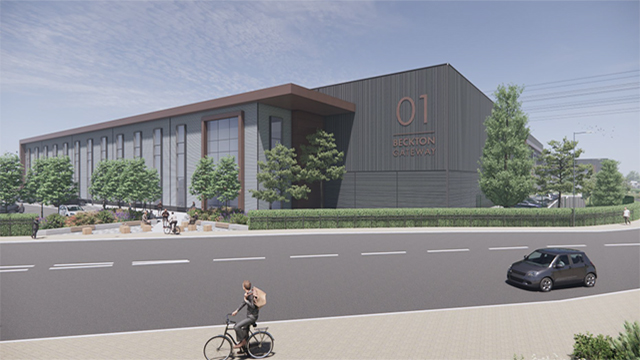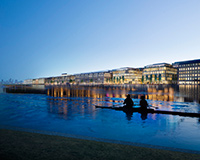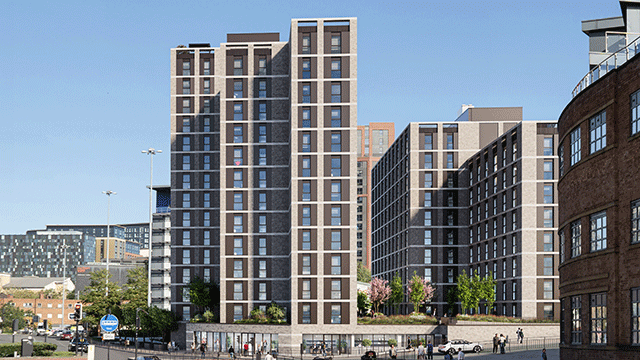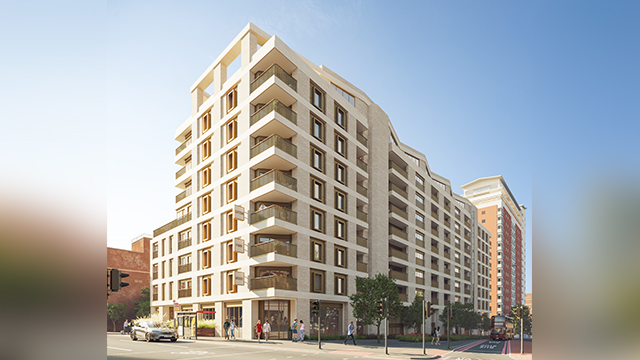On paper, Royal Docks should be a no-brainer. Just a few miles down the road from Canary Wharf sit vast tracts of brownfield land – and its redevelopment is backed enthusiastically by local and national government.
Yet this counts for little when the area remains bogged down by negative – or at least apathetic – perceptions among parts of the property industry who just can’t fathom the attraction of this seemingly far-flung locale.
Now, emerging transport links are proving crucial in a reassessment of the area’s relative proximity, not only to Canary Wharf but to the City and West End beyond. The Crossrail station at Custom House, due to open in 2018, is perceived as the missing piece of the jigsaw for Royal Docks, where two major schemes are proposed.
Chinese developer ABP’s 4m sq ft scheme at Royal Albert Dock, E16, also known as ABP London, and the neighbouring 7m sq ft Silvertown Quays development, E16, – backed by Chelsfield, First Base and Macquarie Capital – both believe they can capitalise on this new infrastructure.
“Crossrail is the real game-changer because it arrives right outside our front door and then it’s five minutes to Canary Wharf and 10 minutes to the City,” says Barry Jessup, director at First Base.
The International Quarter in Stratford, E20, Lend Lease’s joint venture with London & Continental Railways, is setting the tone for what developers will be looking to achieve at Royal Docks. Its transport links have helped cement the location’s credibility for occupiers.
Perhaps this explains why TIQ has sealed two large lettings in 2014. Transport for London has agreed to take a 250,000 sq ft building, while the Financial Conduct Authority will occupy more than 400,000 sq ft at the site, which neighbours the Olympic Park, E15.
Chris Hiatt, director of national office agency at joint agent JLL, says private sector occupiers are on the radar for future lettings and there is no point getting “hung up” on the public sector nature of the deals so far.
“We are dealing with a mix of enquiries and we know that there are more deals there – we are going for larger names which have a prelet timescale,” he says.
Of course, creating an entirely new business district from scratch is not as simple as opening a new railway station, and there are some who remain broadly sceptical of Royal Docks’ chances of success.
A sustainable, integrated residential offer will avoid creating the perception of a fringe business park on the eastern edge of London and is perceived as a key factor in pulling in commercial tenants.
“You need to think about placemaking, the social infrastructure. London is due to grow by hundreds of thousands of people in the next 10 years, so where are people going to live? Housing is becoming more important,” says Matthew Black, senior director at CBRE.
Neal Matthews, director at Strettons, points to escalating land prices as evidence of strong residential demand but questions whether this will translate to the commercial sector.
“There is unlikely to be a lack of land around Canary Wharf and the Isle of Dogs, so why do we need a new business location at Royal Docks?” he says.
He also questions lengthy public sector-led masterplanning of the Royal Docks area. “I flew into City Airport recently and could not help but wonder why there was no development surrounding it. It is a result of too much control that has stymied more piecemeal, private sector development,” he says.
But Jessup suggests the lack of existing surrounding development at Silvertown Quays will facilitate precisely the high level of design flexibility that modern occupiers are seeking.
“London has a history of new commercial districts being created and being successful, whether at Victoria, King’s Cross, or Stratford. It’s about creating an environment that responds to market demand,” he says.
Paul McDermott, partner at law firm Trowers & Hamlins, and adviser to Newham council, believes the potential of Royal Docks is obvious once perceptions are put to one side, meaning the focus by ABP on Asian inward investment makes sense.
“There are no listings of buildings, no nimbyism and strong encouragement from the public sector. I can see the benefit for a business that is not hidebound by tradition,” he says.
McDermott flags up the similarities between perceptions of Royal Docks today and those of Canary Wharf when it was first mooted in the 1980s.
Like Royal Docks, the Isle of Dogs
was an unheralded enterprise zone searching for commercial reinvention. And like the current developments in east London, infrastructure improvements turned out to be the key to its success.
“We contributed £100m to connect the DLR to Bank and it was the Jubilee Line extension that enabled a volume of people to reach us,” says John Garwood, company secretary at Canary Wharf Group.
Garwood agrees that overcoming negative perceptions is all-important. “There was scepticism about Canary Wharf – people didn’t believe the East End was the right place to have the buildings that were being built,” he says.
“The arrival of the Dome made a difference because suddenly there was something beyond us. With Westfield, you now have the largest urban shopping centre in Europe. So there’s no question that the centre of gravity has moved.”
The fact that Canary Wharf lost out to TIQ on both the FCA and TfL lettings is evidence of a challenge from the east to the former’s dominant position. And, like those other schemes, Canary Wharf’s next phase will have a much greater focus on residential uses.
Wood Wharf, as it’s currently known, is around 60% residential, with commercial uses making up the remainder.
“People want to live on top of transport and next door to where they work and we want this development to do that,” says Garwood.
So, while there may be some scepticism yet to be overcome, the historical precedent seems to suggest that Royal Docks could be about to prosper – if it can overcome the competition from both Stratford and Canary Wharf.
The International Quarter, E20
Developer: Lend Lease/London & Continental Railways
Agents: BNP PRE/JLL
Borough: Newham
The pitch: A new business district adjacent to the Olympic Park, E15, offering sustainable, flexible workspace and multiple public transport links
Contents: 4m sq ft of offices (75,000-500,000 sq ft units), 52,000 sq ft retail/leisure, 275,000 sq ft hotel, 350 homes
Transport links: HS1 (Stratford International), Underground/overground (Stratford), DLR (Stratford)
Status: Outline consent in place. Lettings to Financial Conduct Authority (400,000 sq ft) and Transport for London (250,000 sq ft) secured. Occupation 2017
Royal Albert Dock, E16 (ABP London)
Developer: ABP/Stanhope
Agents: CBRE/Savills
Borough: Newham
The pitch: Financial and high-tech district with strong appeal to Asian occupiers seeking space for European headquarters. Enterprise zone status.
Contents: 4m sq ft of development including 2.5m sq ft of offices and a mix of retail and leisure uses
Transport links: Crossrail (Custom House, opens 2018), DLR (Royal Albert, Beckton Park), air (City Airport)
Status: Outline plans approved July 2014. Interest from Chinese occupiers. Initial occupation 2017
Wood Wharf, E14
Developer: Canary Wharf Group
Agents: Not appointed
Borough: Tower Hamlets
The pitch: An eastward extension to Canary Wharf with a greater focus on residential uses and TMT occupiers
Contents: 2.9m sq ft residential, 1.9m sq ft offices, 225,000 sq ft ground floor retail, hotel, community uses
Transport links: Crossrail (Canary Wharf, from 2018), DLR/Underground (Canary Wharf)
Status: Masterplan approved alongside detailed permission for first residential phase. Work to begin late 2014/early 2015
Silvertown Quays, E16
Developer: Silvertown Partnership (Chelsfield, First Base, Macquarie Capital)
Agents: JLL/Cushman & Wakefield
Borough: Newham
The pitch: London’s innovation quarter. Offices and residential uses coupled with “brand pavilions” that allow global brands to interact with consumers. Enterprise zone status.
Contents: 7m sq ft of development roughly split three ways into commercial space, brand pavilions and residential (2,500 homes). Plus retail/leisure space throughout the site
Transport links: Crossrail (Custom House, opens 2018), DLR (West Silvertown, Pontoon Dock), air (City Airport)
Status: Outline plans submitted July 2014, work expected to begin on Millennium Mills element in 2014/15. Occupation 2017











